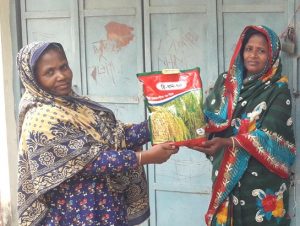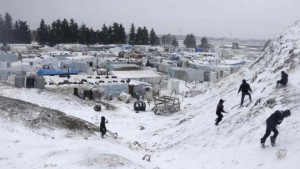By Emma Richards
CONFLICT and mass displacement have pushed parts of Burma (Myanmar) and Bangladesh near crisis or emergency levels of food insecurity, food agencies warned the UN security council on Monday.The Global Early Warning – Early Action (EWEA) report from the Food and Agriculture Organisation of the United Nations (FAO) determines areas of the world that are most at risk of food insecurity, allowing them to mitigate or even prevent their impact. Both Burma and Bangladesh were rated as the highest level of risk and should start implementing action immediately, according to the report.
The displacement of over 655,000 Rohingya refugees and the ongoing conflict in Rakhine State has led to a lack of food access and fuel options compound food insecurity. The report found that food insecurity in the swelling refugee camp, Cox’s Bazar, forces 77 percent of households to adopt negative coping mechanisms. These included relying on less expensive foods (90 percent), reducing the number of daily meals (69 percent) and restricting adult consumption (68 percent).
Clean water is also scarce, with 60 percent of drinking water in refugee camps being contaminated. Since Aug 25, more than 36,000 Acute Watery Diarrhoea (AWD) cases were reported, including 10 deaths. With poor hygiene practices in the camp, along with more refugees expected to arrive, the spread of disease will likely worsen in coming months, the report said.
The sheer scale of the refugee camps and the dramatic influx of people has led to a scarcity of resources that threatens lasting damage and tension with the host communities. The congestion has resulted in limited land space, and the adoption of survival mechanisms – such as the collection of firewood – has degraded the local environment.
As January to March is planting and growing season in Burma and Bangladesh, the FAO have recommended charities and authorities support home production and micro-gardening efforts among refugee populations where possible. They also suggest supplying refugee households with safe food storage equipment to prevent infestations and food-borne illnesses.
To avoid further degradation of the environment, land stabilisation and erosion control are needed in areas where water sources, population security and agricultural lands are threatened.
The organisation also recommends collaborative forest management farming systems, and plant fast-growing fuelwood plants, tree nurseries and seedlings to replenish the surrounding forests and restore resources for the local communities.
In 2016, the number of hungry people in the world increased for the first time since the turn of the century, to 815 million people, with more than half of them – 489 million – in conflict zones. The intensification of conflict was a key driver of the surge in hunger levels, after decades of decline.
Francis Mwanza, head of the World Food Programme office in London, expressed his concern over the effects conflict was having on food supply globally.
“For the World Food Programme, the price of conflict is becoming too high. Eighty per cent of WFP expenditure occurs in conflict zones,” he told The Guardian.
“The fear is if we continue having no access in a number of countries, we may have famine conditions in some areas. If we want to reach zero hunger, ending conflict is a major step in reaching that goal.”
Read more at https://asiancorrespondent.com/2018/01/food-insecurity-burma-bangladesh-nearing-crisis-point/#5r8IZIE85c9l8EQy.99 via EIN NewsDesk




